National Science Museum

A special exhibition "Jewelry Earth Creates Kiseki" is being held at the National Museum of Nature and Science (Ueno, Tokyo), which is a collection of a wide variety of jewelery and gorgeous jewelery made from them. The session is from February 19th (Sat) to June 19th (Sun).
I have participated in the news gathering and the press preview held prior to the event, so I will report on the situation at the venue.
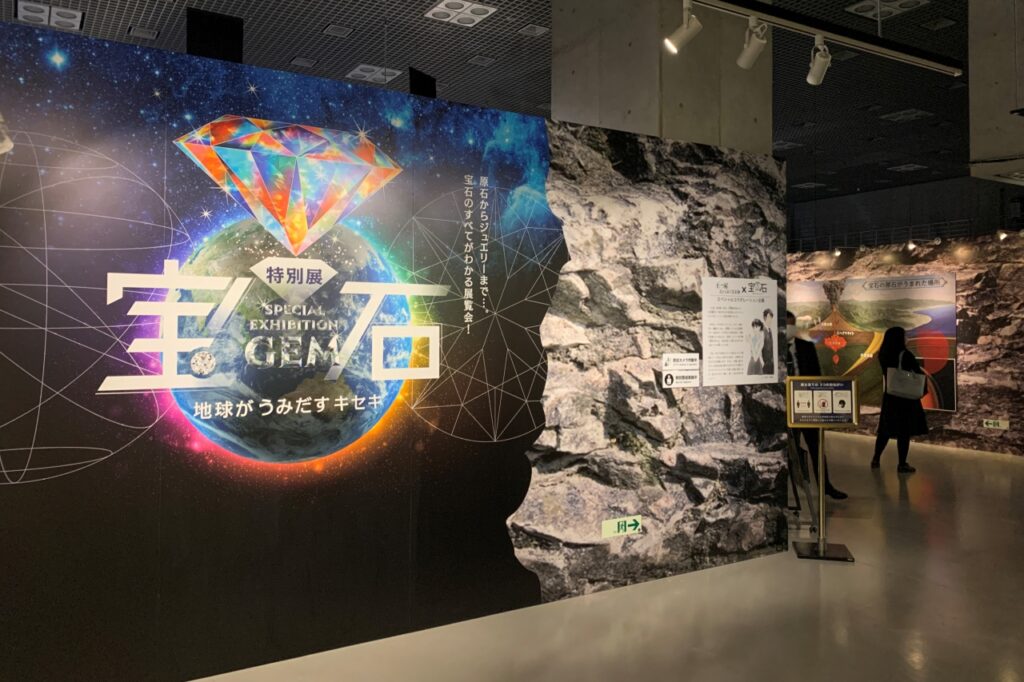
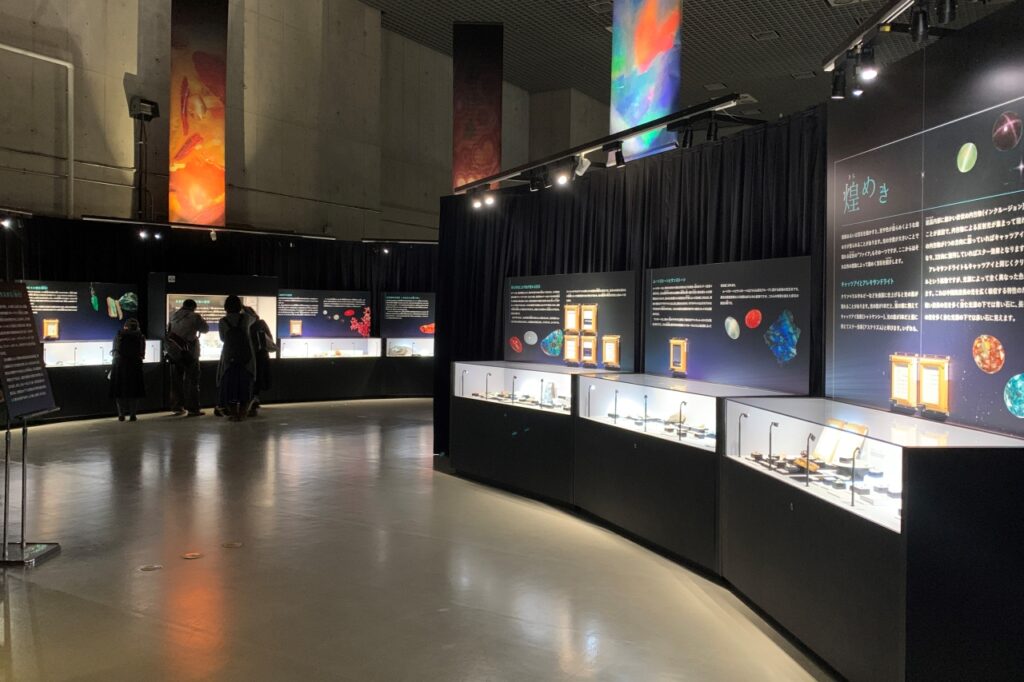

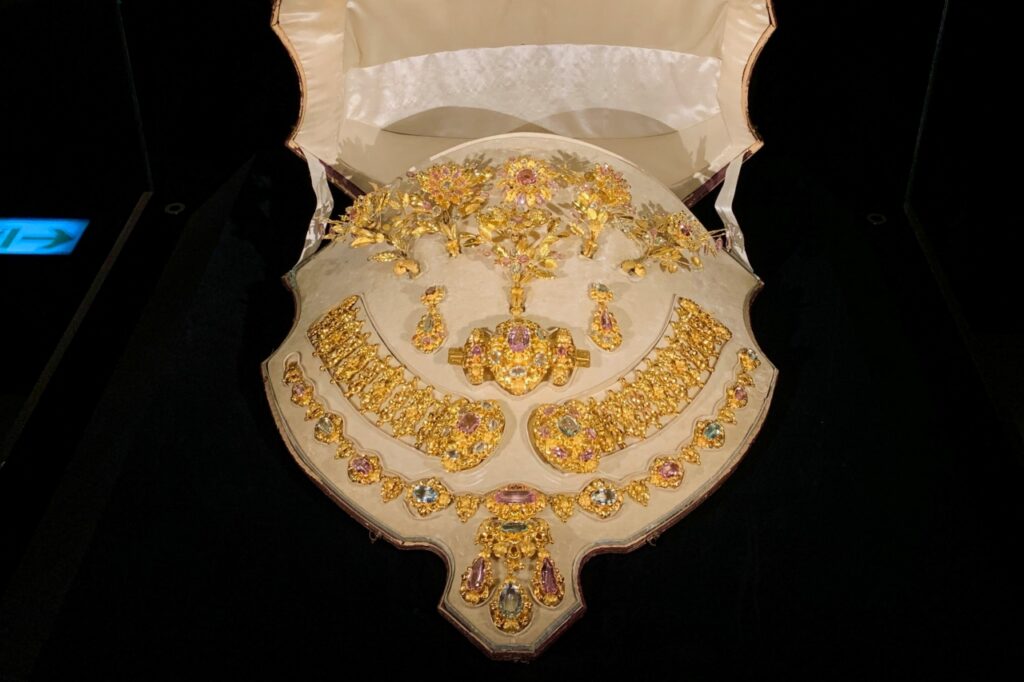
Kazureza is also curious! An exhibition where you can see all about gems
Most gems are minerals formed inside the earth. Through the combination of various geological processes, minerals that meet all the requirements of gemstones such as beauty, durability and moderate size are rarely produced and have long been revered because of their rarity.
In ancient times, it was used as a talisman, amulet, and a symbol of status and power. Now as a jewelery. The jewels, which shine beautifully and have mystery and strength in their undying appearance, have fascinated people all over the world over time.
The special exhibition "Gemstones of the Earth" will showcase about 200 types of gemstones, including rough (raw stone) and loose (polished stone), as well as jewelry from the world-famous jewelry collection, including Albion art. It is a content that comprehensively introduces "gems" from a scientific and cultural perspective while showing the real thing, such as the mechanism of birth of gemstones, history, properties, diversity, processing technology, etc.
Kazureza, a talent who was the official ambassador of the exhibition and was also in charge of the audio guide navigator, appeared at the interview.
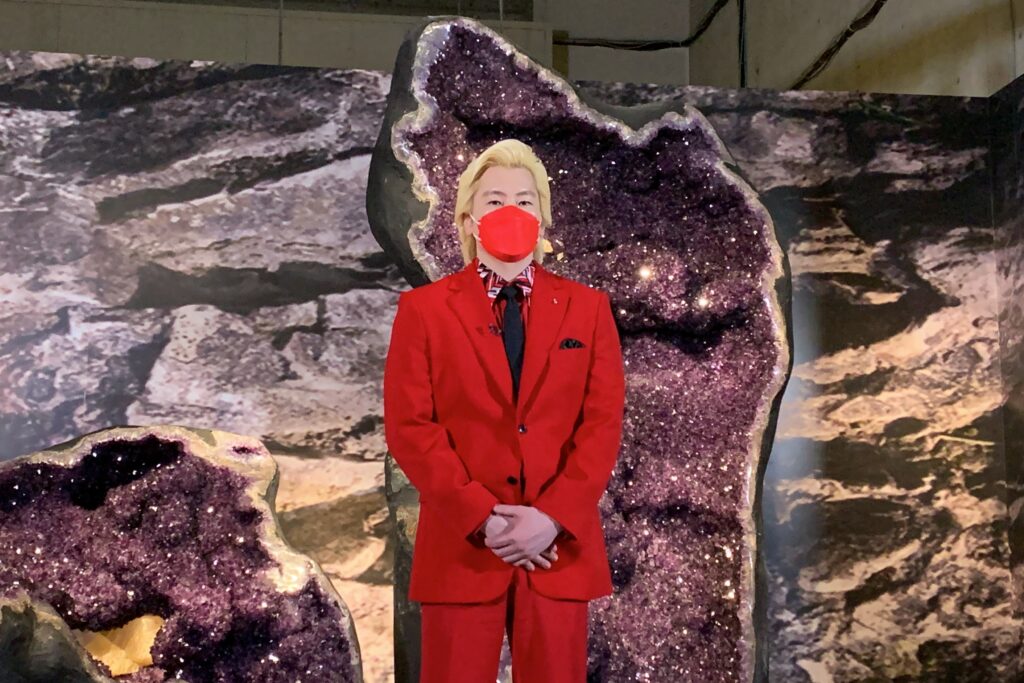
Mr. Kazureza says that there is so much to learn about this exhibition. "Every gem has its own characteristics, and if you look at how it changes color when exposed to light, how hard it is, how it cracks, etc., you can find out more about various things by derivation. I think it's okay, "and suggests how to enjoy it.
At the end of the interview, he said, "I don't say anything about gems and minerals, but it was interesting that human perception of them changed with history. Please come and visit us." rice field.
In addition, Ritsuro Miyawaki, director of the Department of Earth Sciences, National Museum of Nature and Science, who is the supervisor of this exhibition, talks about his thoughts on this exhibition as follows.
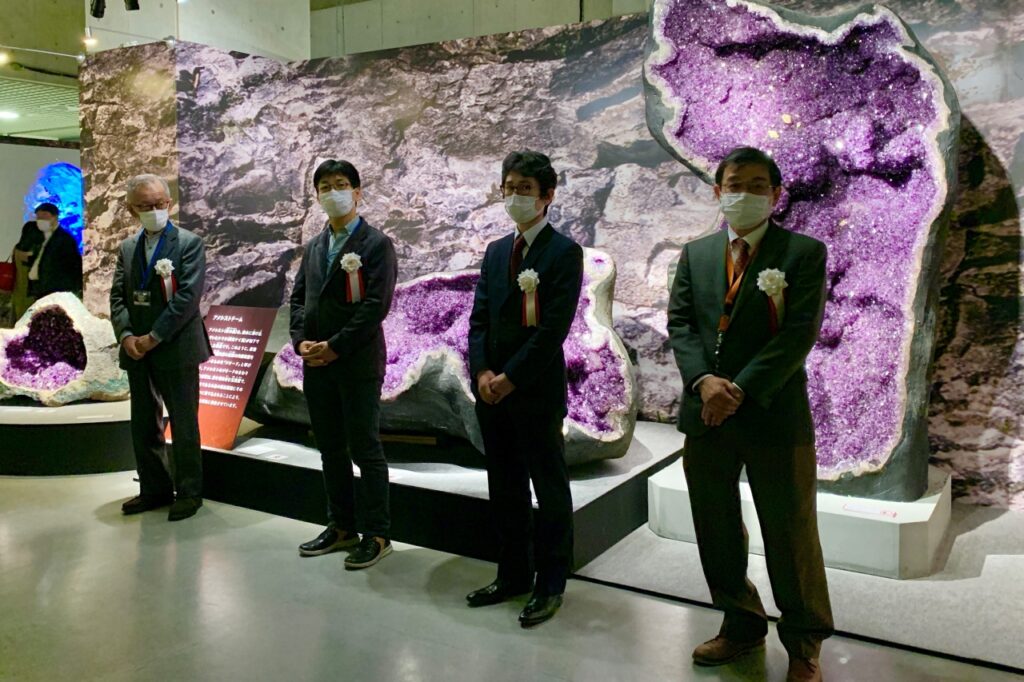
"Jewelry has been close to our lives since ancient times as an entity that enriches and enhances people's lives and enriches our lives not only as a practical product in real life, but rather as a presence that enriches our lives. I hope that you will make use of this exhibition to deepen your perspective on the background and the knowledge that you can fully enjoy the secret of its beauty while looking back at. "
Chapter 1 Birth of rough stone
I will take up some specific exhibition contents.
In "Chapter 1 Birth of Gemstones", four types of occurrence (igneous rocks, lodes, pegmatites, metamorphic rocks) are presented with large specimens of various rocks including gemstones. ) Is introduced separately.
For example, the rough stones found in "igneous rocks" formed by the cooling and solidification of magma are diamonds and peridots. Amethyst and rock crystals are said to be the rough stones found in the "lode", which is the trace of hot hot water that exists deep underground and has risen through cracks in the bedrock.
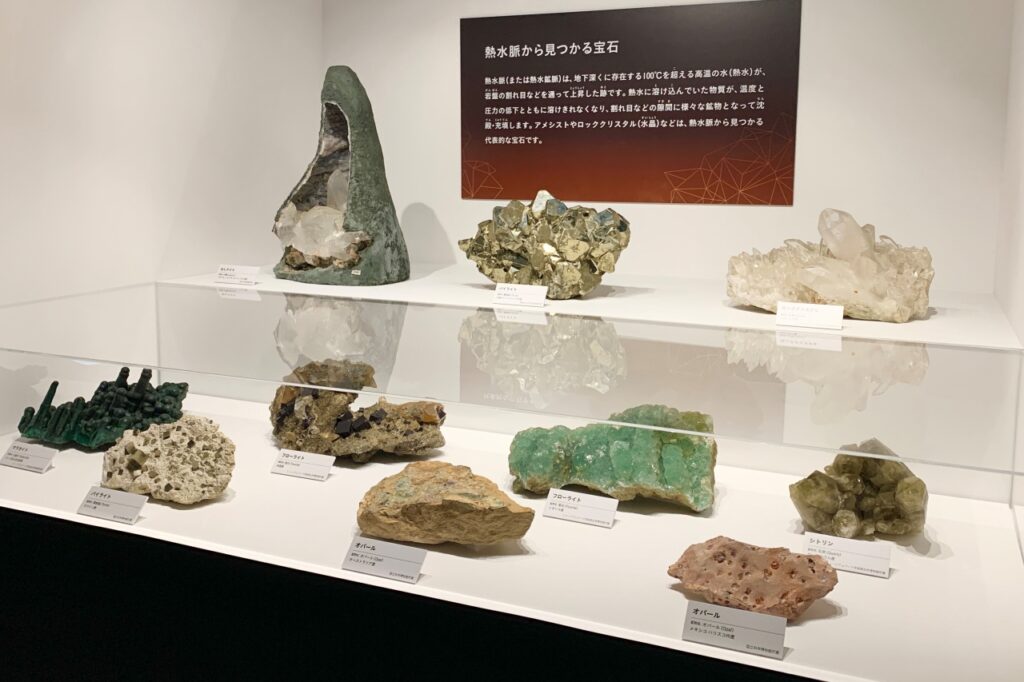
The visuals of the rough stones are unique, such as tourmaline, which looks like an artificial object with some energy, and malachite, which is crystallized like a round mycelium. In addition, a pallasite meteorite containing peridot was also exhibited as an extraterrestrial rough stone.

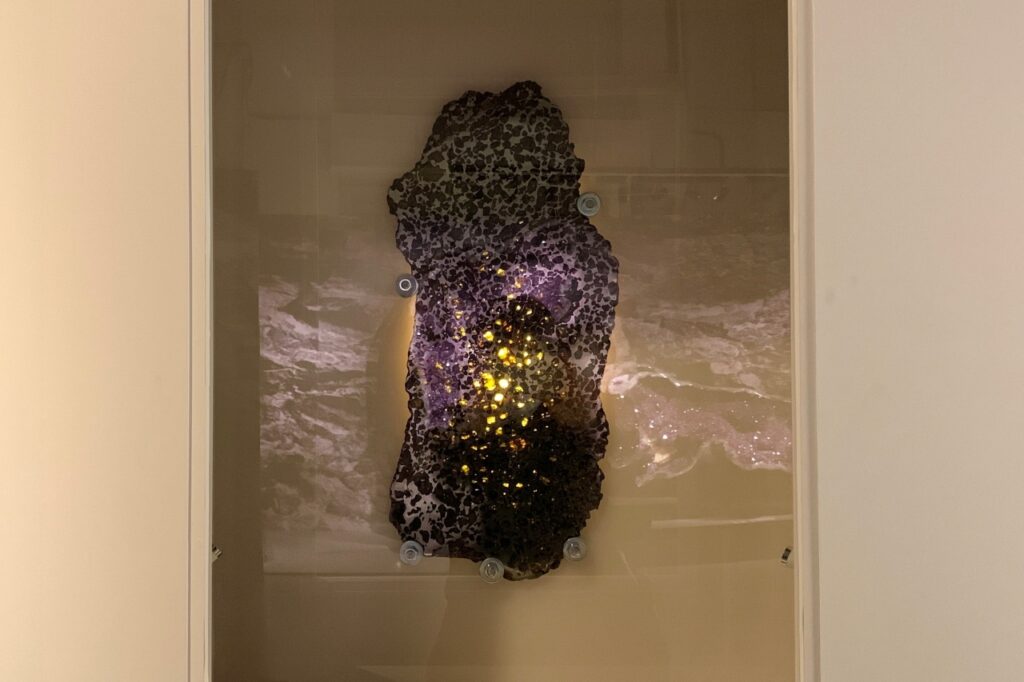
In Chapter 1, you can also see the huge amethyst dome with a height of about 2.5 m, which was excavated from the lava plateau in Brazil, which was glimpsed in the photo earlier. It is spectacular to see a large number of amethyst shining so much that you can hear the sound. This is the highlight of this exhibition.


Chapter 2 From rough stones to gems
"Chapter 2 From Gemstones to Gemstones" introduces the processing technology from rough stone mining to cutting (molding and polishing processes). For example, we display a process sample of a round brilliant cut (58-sided cut) designed as a cut that maximizes the charm of diamonds, and explain in an easy-to-understand manner how rough stones become beautiful gems.
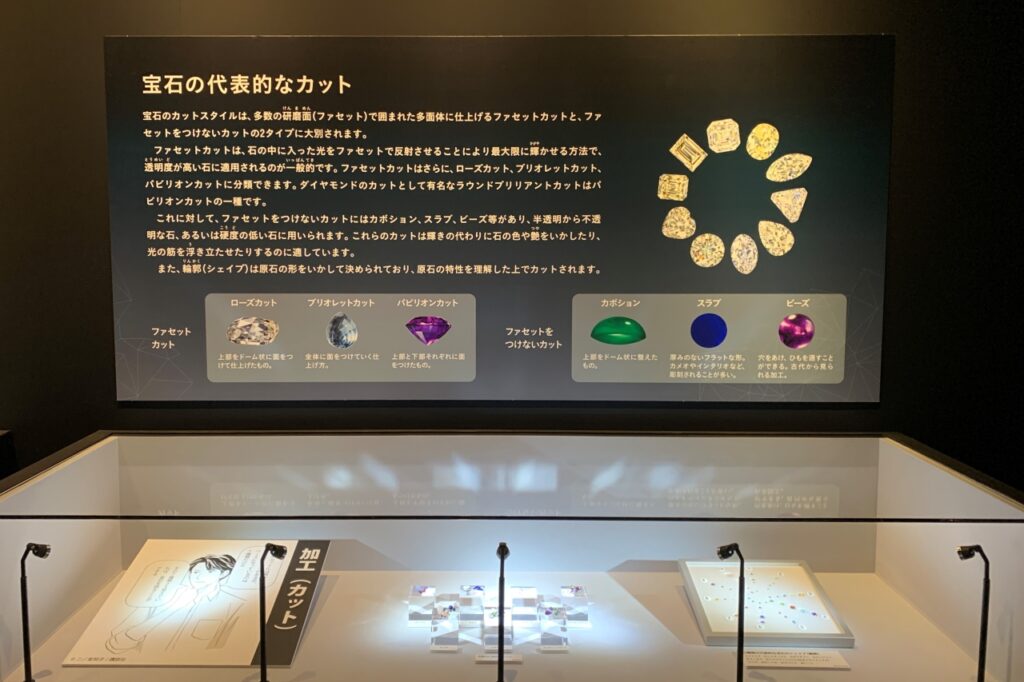

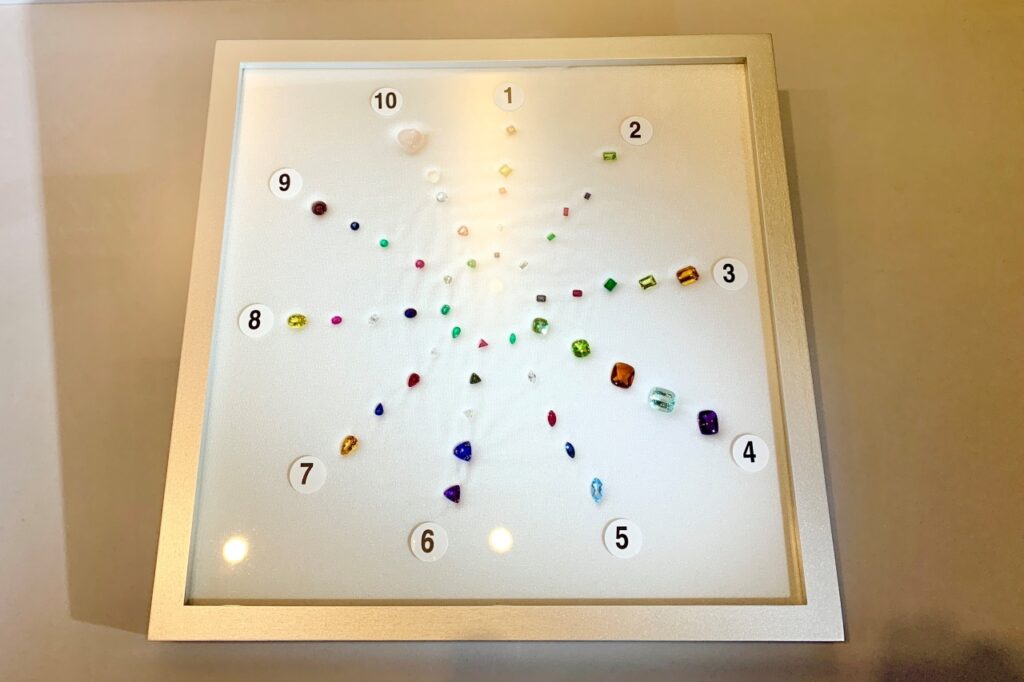
Of the jewelry of the "Hashimoto Collection" collected by antique collector Nuki Hashimoto (1924-2018) at auctions around the world over 15 years, about 200 rings with jewels set were produced. Exhibitions arranged in order. You can trace the history of gem cutting for about 4000 years.
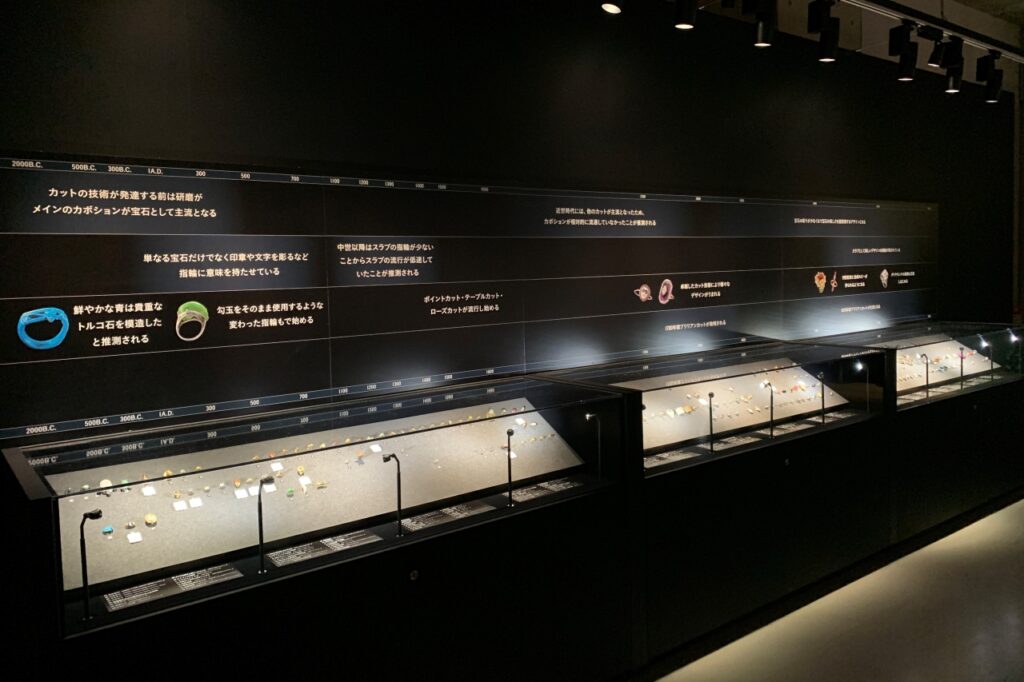
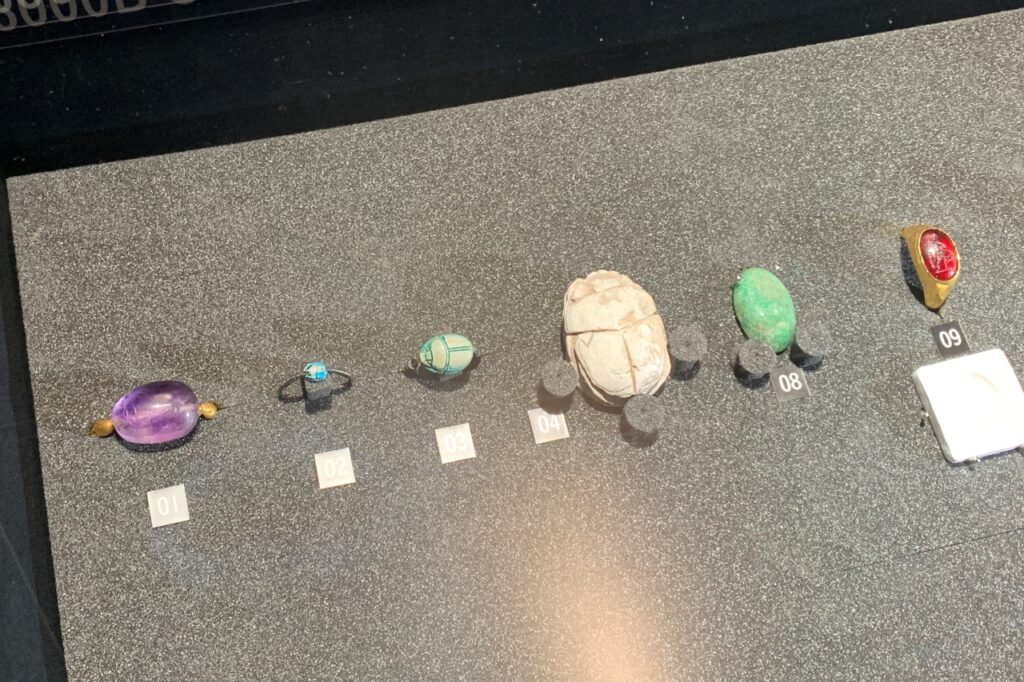
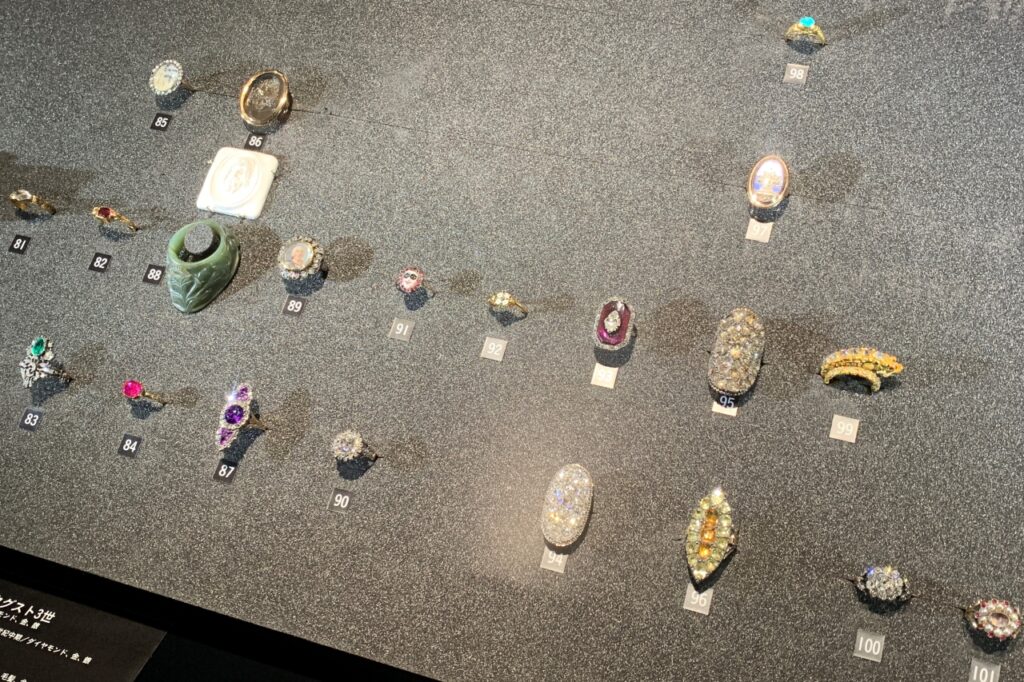
If you are an antique jewelery enthusiast, the lineup is so varied and diverse that you can watch it for hours on its own. You should be aware of various things by watching along with the times, such as "Until the 16th century, hemispherical smooth cuts (cabochon cuts) were the mainstream."
Chapter 3 Gem Characteristics and Diversity
In "Chapter 3 Characteristics and Diversity of Gemstones", rough (raw stone) and loose (polishing) are explained while scientifically explaining the characteristics that are the value standards of gemstones such as "brilliance", "glitter", "color" and "strength". Introducing more than 200 kinds of gems at once, centering on stones).
You can learn about the characteristics and variety of each gem, from the four major gems of diamond, sapphire, ruby, and emerald to rare stones such as phosphophyllite, and biological gems such as pearls and corals. ..
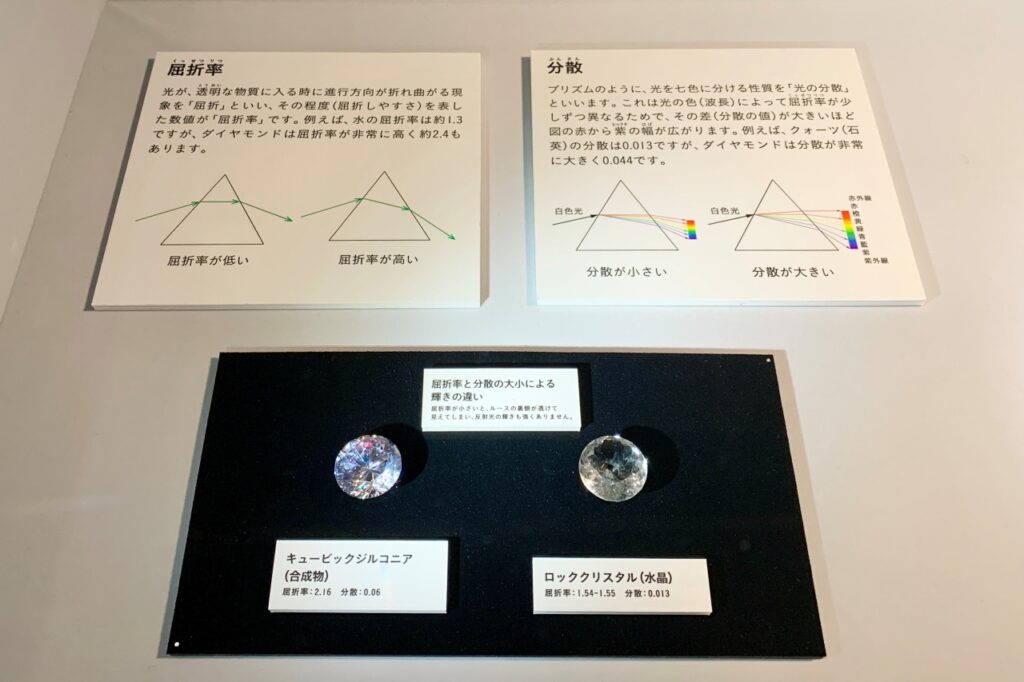

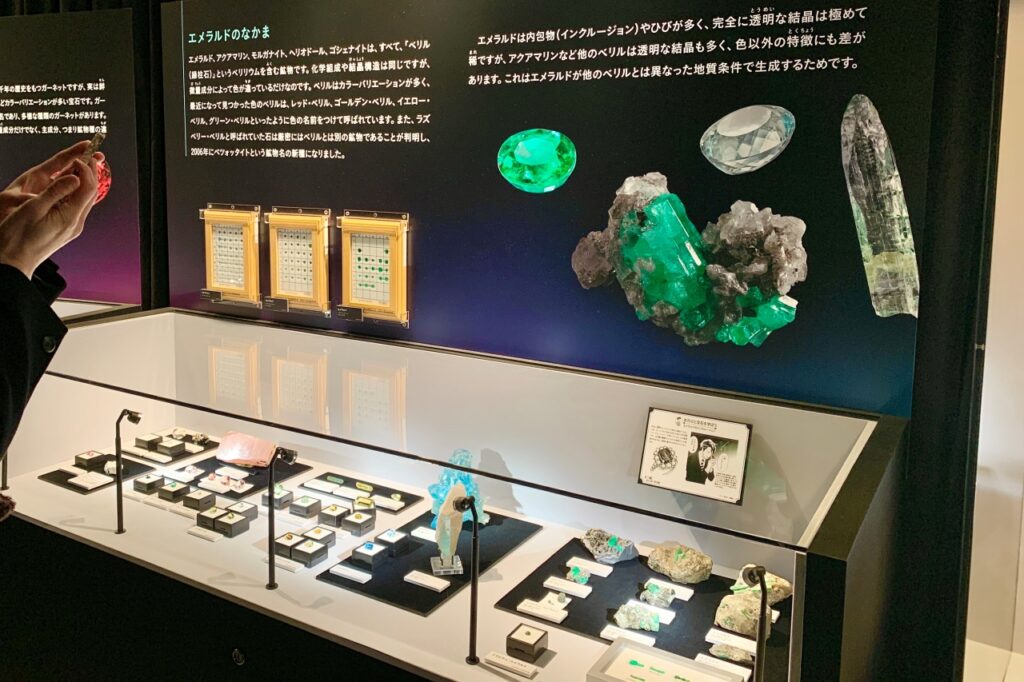
At the exhibition, I was surprised at the surprising abundance of color variations of garnet with a red image, but it seems that garnet is actually a group name rather than a single mineral species. The difference in color is also related to the difference in mineral species.

Tourmaline, which is also a group name, is not only bicolor (2 colors) and tricolor (3 colors), which have different colors depending on the part of one crystal, but also pleochroism and light source, which have different colors depending on the viewing direction. A jewel that is fun to look at and may have discoloration that changes color depending on the color.
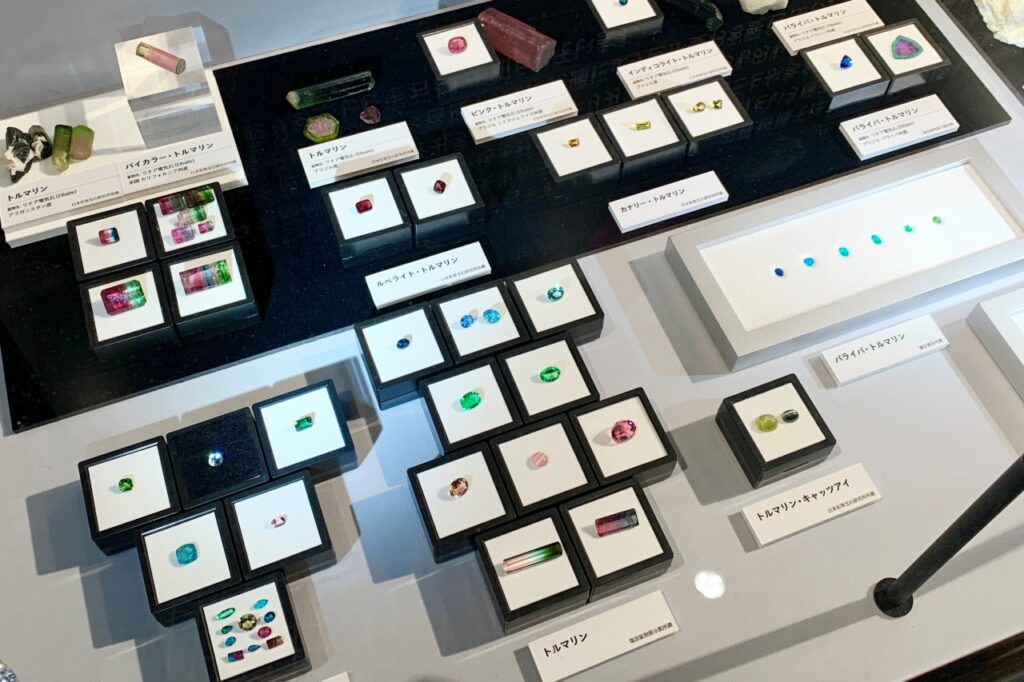
I also found a rough opal with a psychedelic and cool visual. Ruth had an elegant impression and was attracted to the gap. It is the real pleasure of this exhibition that you can see the difference between the impressions of rough and loose as well as opal with your own eyes.
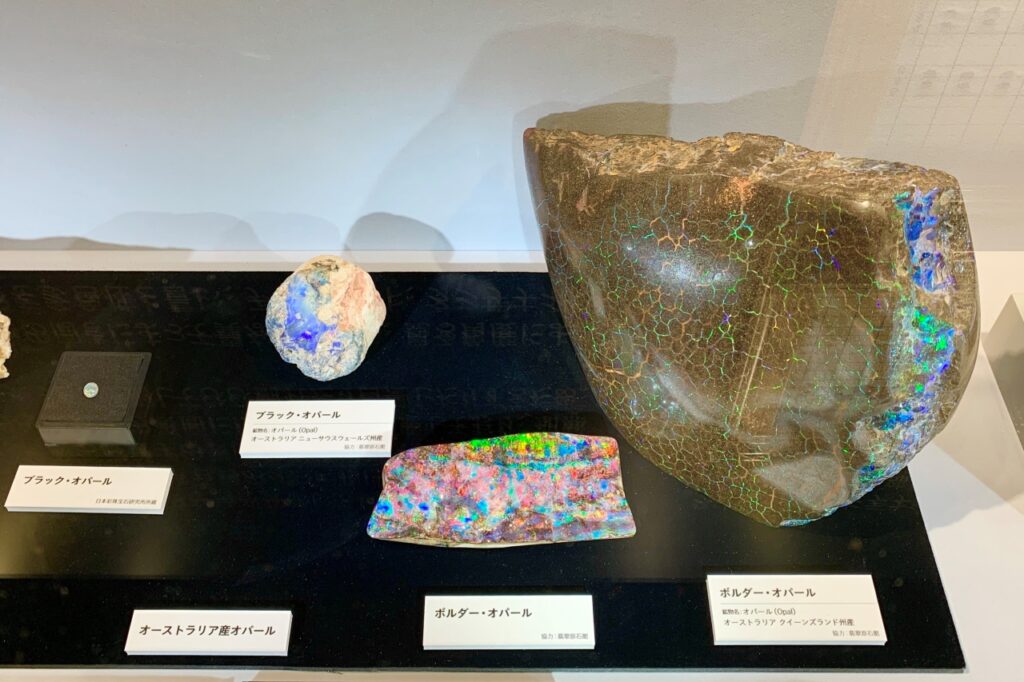
What you should check in Chapter 3 is the "Jewel that glows with ultraviolet rays (fluorescence)" corner. In a small dark room, you can enjoy the co-starring of fantastic light emitted by various stones, including fluorite (fluorite), which is typical of fluorescent materials. The dark brown amber glows light blue, while the ruby has a stronger red color, which makes it exciting.
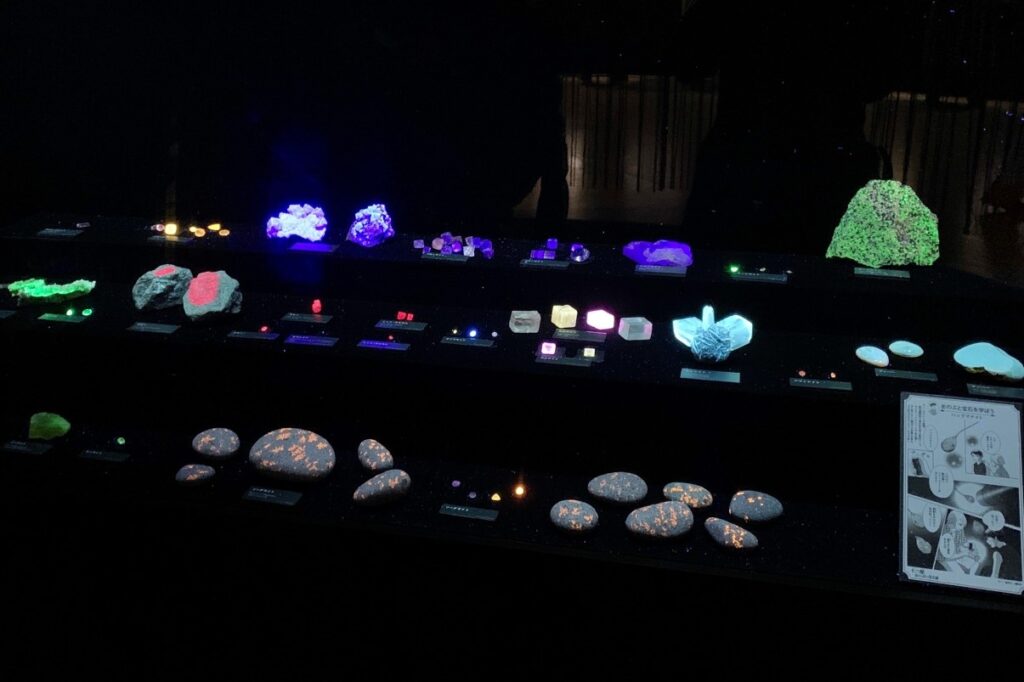
There is also a "Japanese jewel" corner. I knew that Japanese gems could be pearls and jade, but you can also find topaz, garnet, rubies, sapphires, amethyst, and road crosite. I heard many voices of visitors who were surprised at the variety of types.

The one that had an impact was the "Giant Jewels" corner. At the exhibition, which is the largest collection of 20 kinds of gemstones, the largest rock crystal is "21290.00ct", which is a carat number that I have never seen or heard, and I laughed unintentionally. I don't think I can lift it with both hands … With such a large size, I am grateful that I can firmly recognize the beauty of fine cuts.
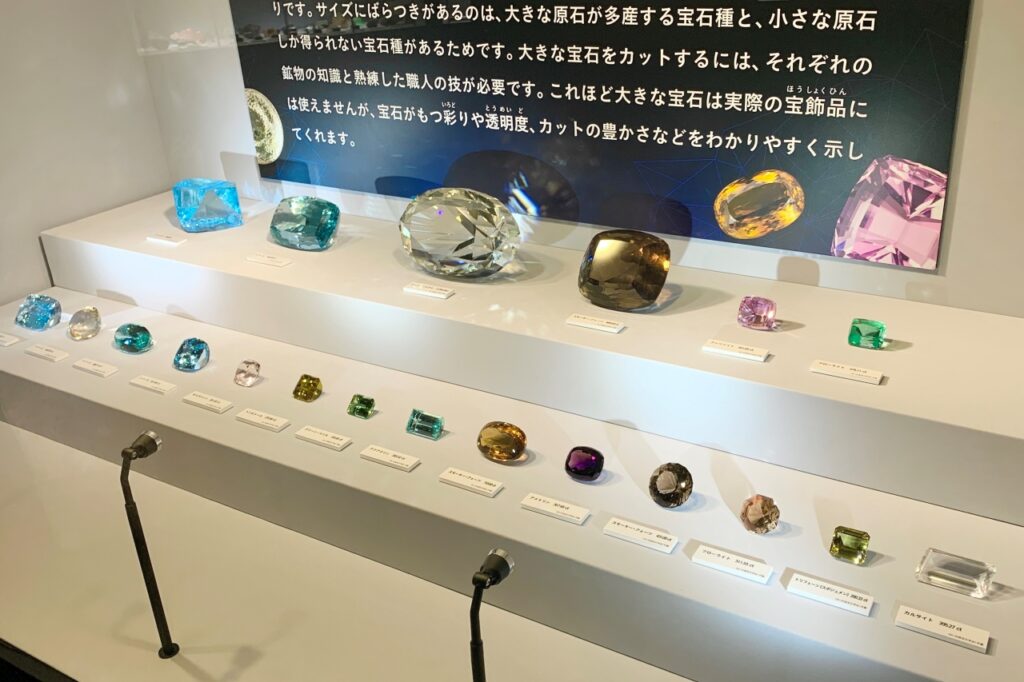
Chapter 4 Jewelery Techniques
Beautifully shining loose becomes jewelry for the first time when it is housed in a precious metal bezel (pedestal) such as gold or platinum, which also plays a role of enhancing the loose while shining on its own.
In "Chapter 4 Jewelery Techniques", we focus on jewelry setting (tailoring) techniques. To show that excellent settings add more value to jewelery, the artistic design gems of the high jewelery maison "Van Cleef & Arpels", which has its head office in Paris, and the jewelery brand "Gimmel" from Ashiya City, Hyogo Prefecture. Introducing many.
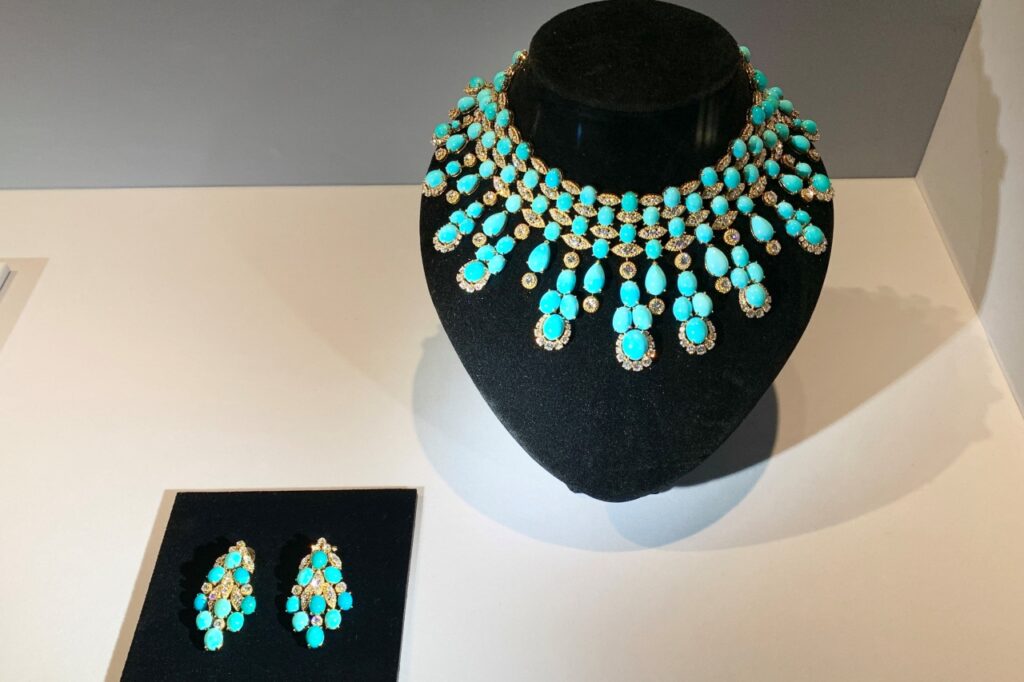


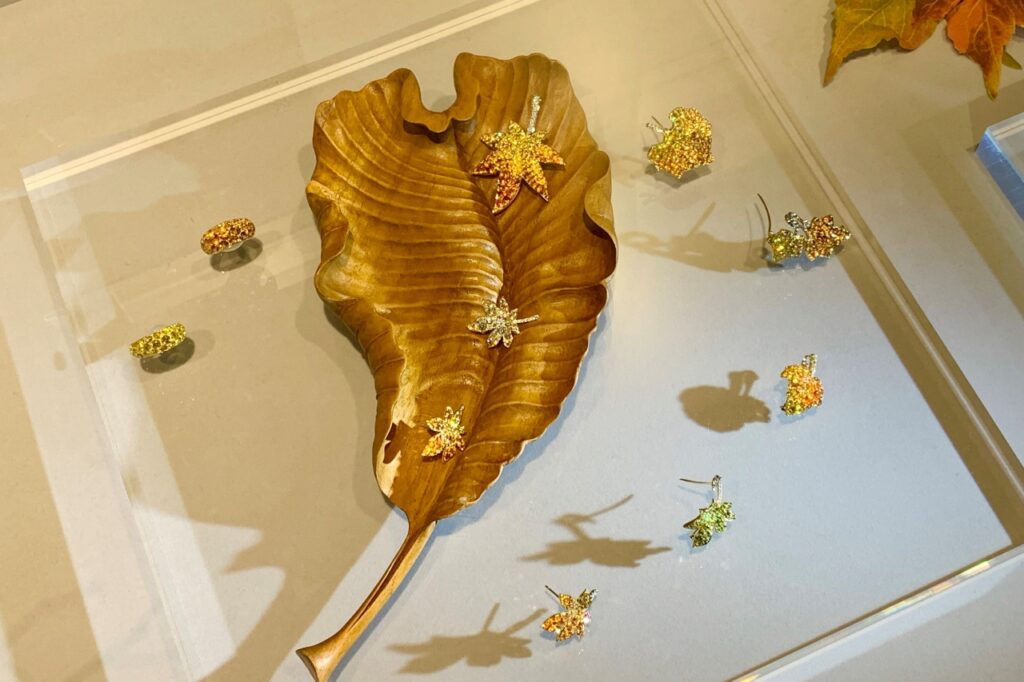
Especially eye-catching in terms of setting is Van Cleef & Arpels's "Grape Leaf Clip", a work using rubies and diamonds. Do you see that you can't see the precious metal that holds the fine rubies in a mosaic style?
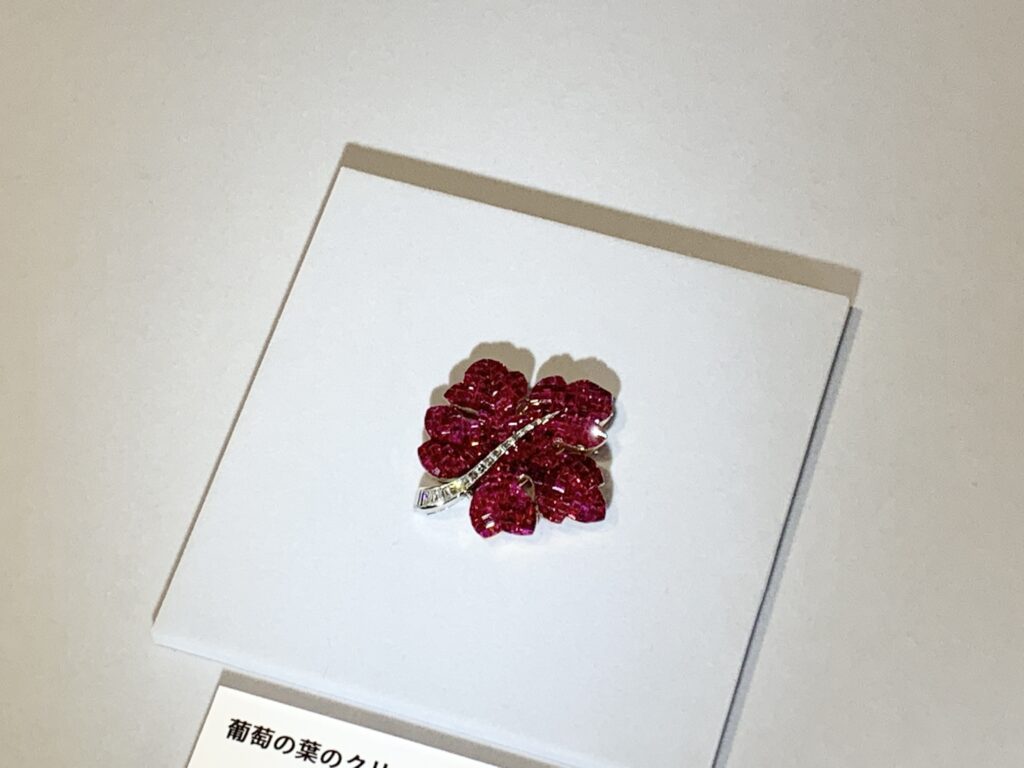
It is said that the "mystery set", a patented technology of the same brand that fixes the claws and protrusions that support the loose so that they cannot be seen from the outside, is used for this. There was only technology that required extremely high expertise, and no matter how much I looked around, I couldn't understand how the stones were set … It is a wonderful design that you can enjoy the harmony of the pure colors of ruby.
Chapter 5 The Extreme of Jewels
In ancient times, it was processed into rings and pendants as a talisman and amulet, and in the era of the Renaissance, which transitioned from the Middle Ages to the early modern period, it became a brooch or necklace that was easily noticed by people as a symbol of the "pride" and power of the royal aristocrats. A jewel that has been tailored.
It is said that jewels that existed only for a limited number of people, changing their roles depending on the times, have been handed down as historical works of art and cultural properties that transcend the boundaries of ornaments.
In "Chapter 5 Jewelery Extremities", about 60 selected works of art are exhibited, from the Albion Art Collection, a global jewelry collection, to works made in ancient Mesopotamia and Egypt, to 20th century jewelery. You can appreciate the history of supreme beauty that is a fusion of nature and culture.
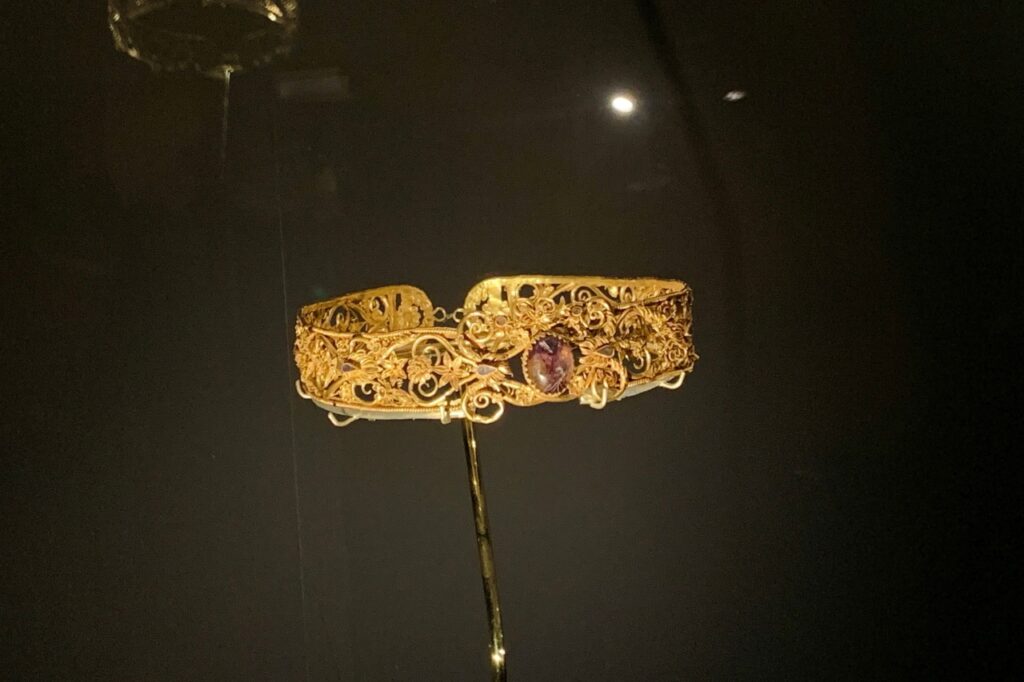
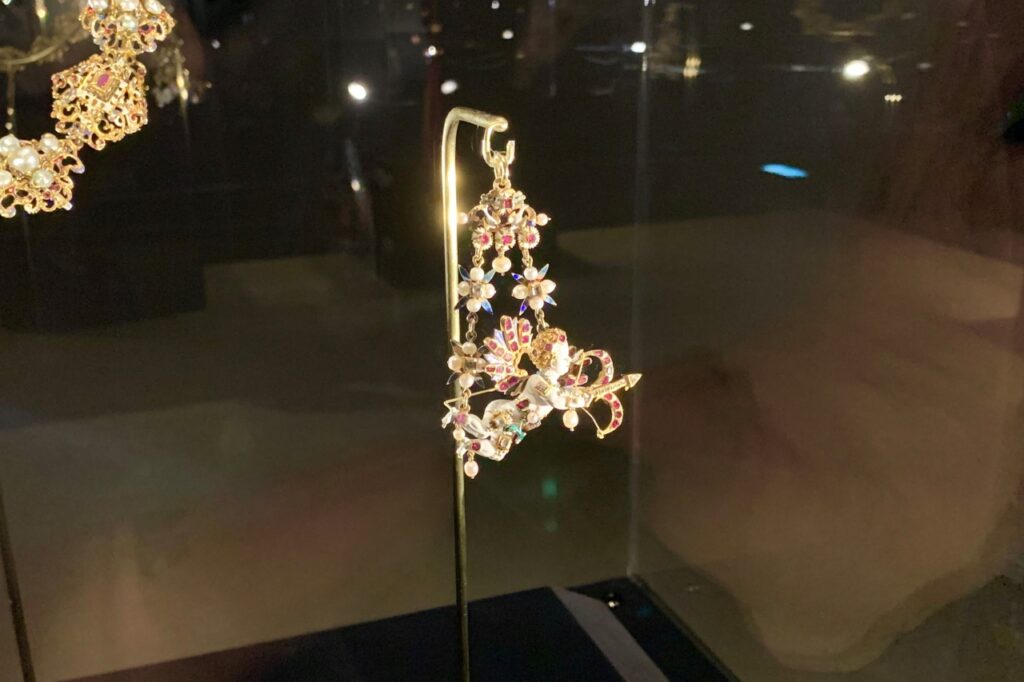
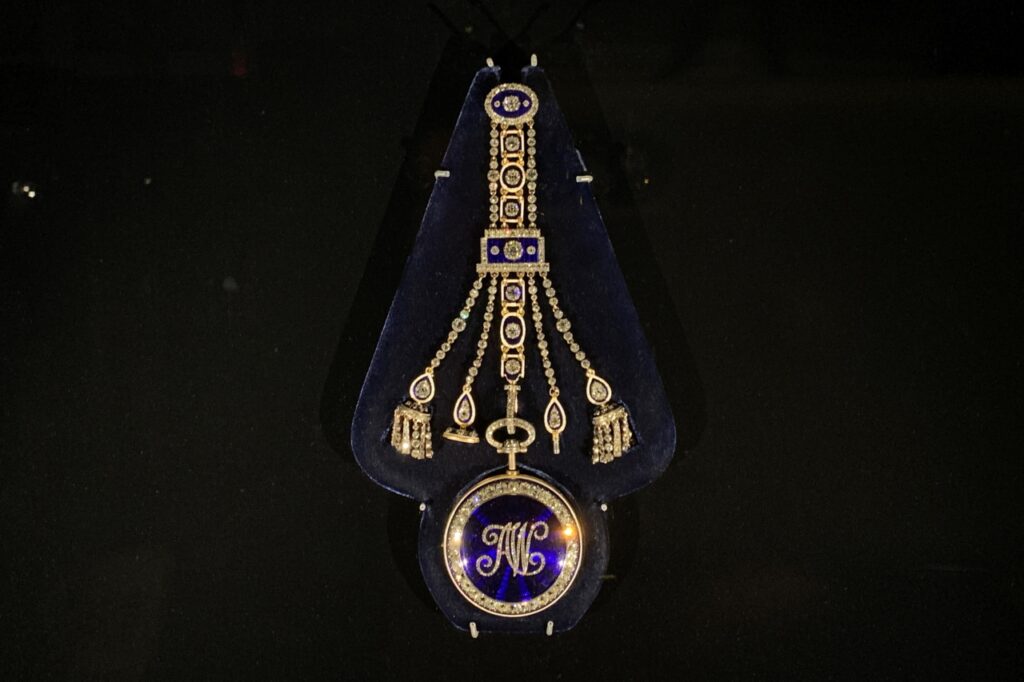

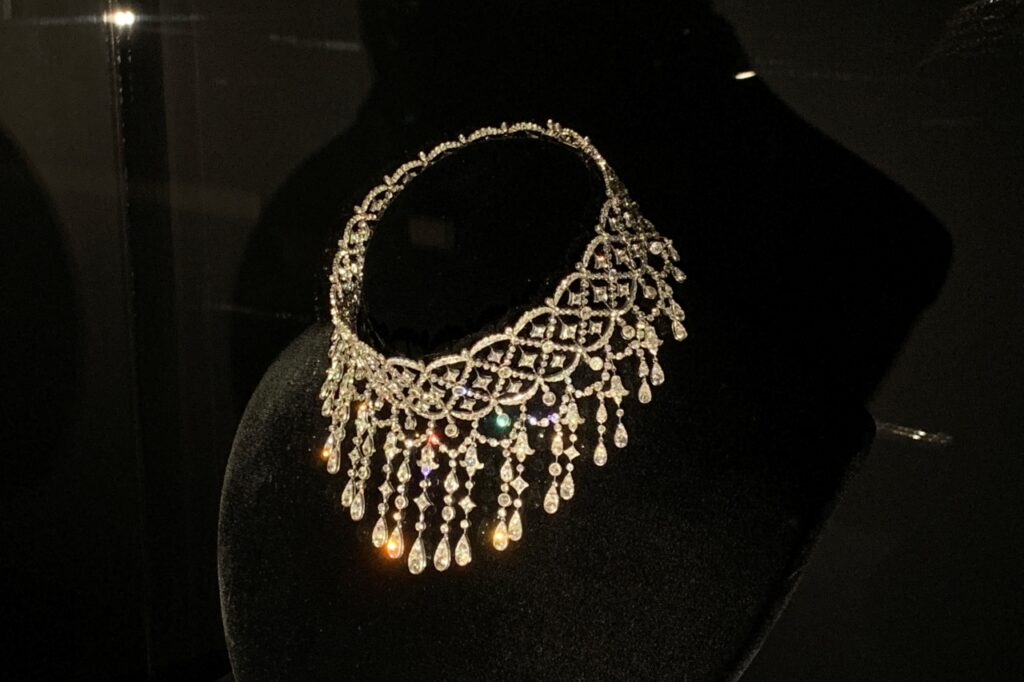
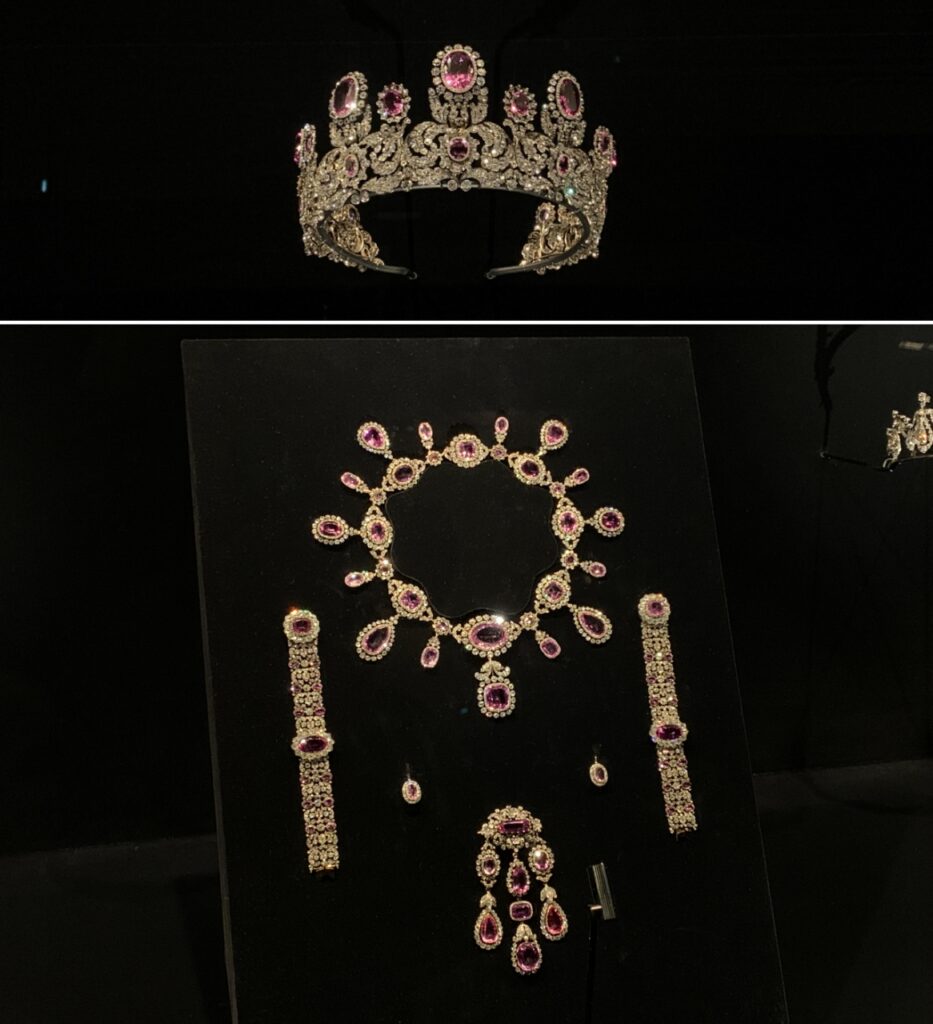
What caught my eye was the chest decoration that Alphonse Mucha, a painter who was very popular with Japanese people, co-produced with Georges Bouquet, who aspired to revolutionize jewelry. This work is said to be a monumental work at the height of Art Nouveau, but it has a romantic design such as a flower pattern surrounding a maiden statue reminiscent of a muse, an arrow reminiscent of Cupid, and a pearl connected by a chain. It's very adorable.

At the second venue, which is the last of this exhibition, the top three works of the "JJA Jewelry Design Award", a competition aimed at developing Japanese jewelry and disseminating the talents of creators and craftsmen, are on display. The line of sight is glued to the design.
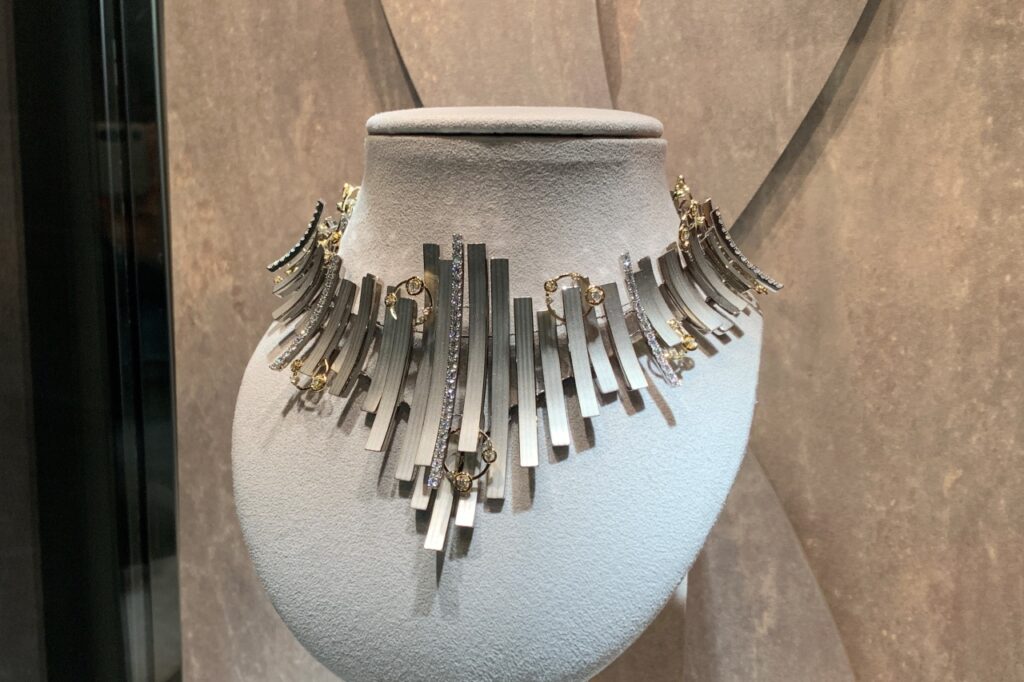
Among them, "Twinkle ~ Memories of the Stars ~" by Mr. Yasushi Uekubo, who won the Grand Prix, is the most fascinating piece of jewelry that I personally exhibited. This work is based on the meteor shower that the creator saw as a child, and uses diamonds, platinum, white gold, and yellow gold to express the twinkling of star shadows shining in the night sky and the trajectory and afterglow of the brilliance left by the meteors. It seems to be. A necklace with a very unique yet sophisticated elegance.
When I was very satisfied with the antique jewelry full of gems that remain in the history of beauty, I was presented with a brilliant masterpiece that said, "Modern designers are not defeated!" It was a unique exhibition.
In this exhibition, the characters from "Nanatsuya Shinobu no Jewel Box" serialized in "Kiss" (Kodansha) by manga artist Tomoko Ninomiya will show you around the venue, as well as illustrations drawn at the second venue. Also on display are three works drawn by a colored pencil writer, Mr. Neko wearing boots, so fans shouldn't miss it.
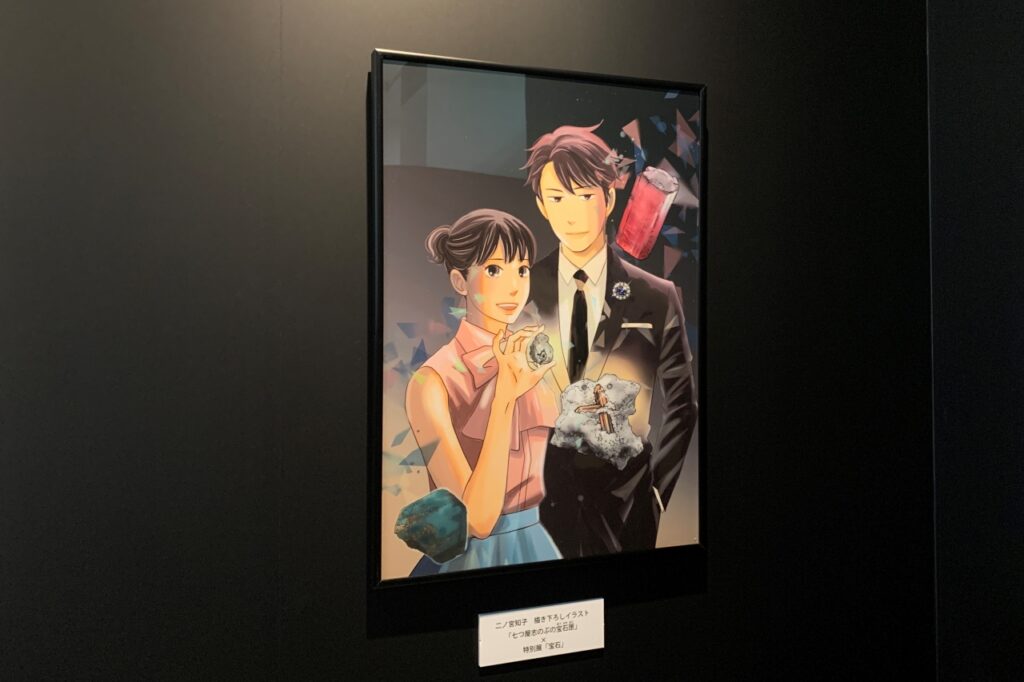
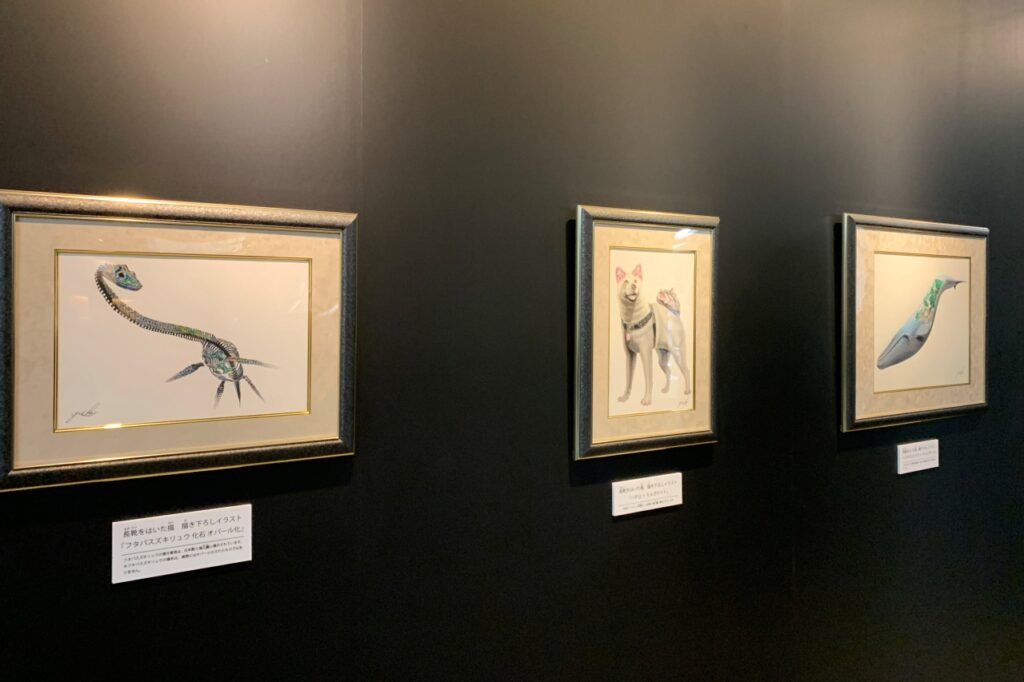
Ritsuro Miyawaki of the National Museum of Nature and Science said in the PR of this exhibition as follows.
“The most important thing to see in the museum exhibition is the“ real thing ”. I don't have many chances to see the real thing, but this venue collects and concentrates them. Come to the venue and see the real thing. Please find your favorite stone. "
This exhibition, which is full of dazzling brilliance, made me feel "I want you to see the real thing, not photos and videos!" While learning the reasons for the beauty of gemstones, please take a look at the history of beauty that humankind has accumulated.
Outline of the special exhibition "Jewelry of the Earth"
| Legislative session | February 19th (Sat) -June 19th (Sun), 2022 * The session is subject to change. |
| venue | National Science Museum Earth Pavilion B1F Special Exhibition Room |
| Opening hours | 9:00 to 17:00 (admission is until 16:30) |
| closing day | Monday (closed on the following Tuesday if it is a national holiday) * However, it will be open on March 28th, May 2nd, and June 13th. |
| Admission (tax included) | General / university students 2,000 yen, elementary / middle / high school students 600 yen * Reservation required by date and time * Please check the official website of the exhibition for details. |
| Organizer | National Museum of Nature and Science, TBS, Yomiuri Shimbun |
| inquiry | 050-5541-8600 (Hello dial) |
| Exhibition official website | https://hoseki-ten.jp |


